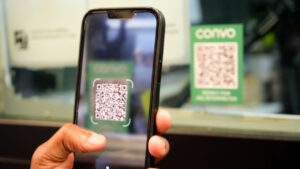I have questions about working with Deaf employees, but I’m not sure how to ask.. Am I at the right place?
Yes! We’re glad you’re here! It shows that you are interested in making your workplace more inclusive for Deaf people and that you’d like to know how to make it happen. We’re excited to answer any burning questions you may have but are unsure where to ask.
1. Why did the Deaf employee request a different ASL interpreter after I provided them with one?
Think of a time when you decided to change your service provider after you didn’t feel satisfied with your provider. Sometimes Deaf employees feel that way about their interpreters – it does not mean the interpreter is not technically competent; they may not be the best match for the individual. A Deaf employee hosting a presentation about economics may need a sign language interpreter versed in business so that they can interpret signs into business terms that fit the subject. Deaf employees generally prefer interpreters who capture and show their personality, style, and demeanor the best.
2. Should I provide materials for the agency / interpreters as I do for the Deaf employee in meetings?
Yes, this will help interpreters get the full context and information they need to prepare for meetings involving Deaf employees. That way, the conversation will likely be seamless when everyone involved understands the topic at hand. It will lead to more accurate interpretation (such as proper sign language for specific terminology and jargon) for the Deaf employee. Not only that, the non-signing employees and colleagues will be able to get more accurate information when interpreters speak specific industry-related terms while the Deaf employee is signing.

3. Do I need to use a team of interpreters?
For events with a large attendance and a duration that will go longer than an hour, it is highly recommended that you have a team of interpreters to ensure that communication effectiveness won’t be compromised. Also, most interpreters won’t accept an assignment without a team if the event lasts longer than 30 minutes. Sign language interpreting requires a lot of effort, and the quality of work for an interpreter can suffer after a lengthy period of interpreting. When a sign language interpreter takes a break, they still support the active interpreter by serving as another “listener” to ensure that the current interpreter captures the message being delivered (i.e., unclear pronunciation or a correct sign for a word). Teams of interpreters ensure that the communication quality remains at a top-notch level.
4. Do I turn off my video feed in video meetings with Deaf employees and their interpreters?
If you’re the presenter, it would be a best practice to achieve genuine interaction if you keep your camera on while speaking. This allows the Deaf viewer to see your body language and nonverbal communication as a tone of voice while watching the sign language interpreter at the same time. This helps with engagement. However, do check in with the participants; they have their own preferences!

5. What are other ways to include Deaf employees besides providing interpreters?
Great question! There’s more to making the Deaf employee feel fully included other than providing interpreters.
- Make sure to provide captions and/or transcripts for all materials that have audio, such as videos, podcasts, and verbal announcements, so that the Deaf employee has full access to the information being shared.
- When giving a presentation with slides, please give a minute for everyone to read the slides first before speaking. This allows everyone involved time to read the content first so that they can give the interpreter full attention to listen to what you have to say instead of switching to reading and listening back and forth if you speak too early.
- Face the Deaf employee directly when you’re speaking instead of looking at the interpreter instead of facing the interpreter when talking to the Deaf employee. Generally, you want to accomplish an environment where you feel natural to have an interpreter around!
6. Is Deaf inclusion expensive?
No. You may qualify for tax benefits and incentives for hiring people with disabilities. However, regardless of costs, we recommend considering this as an investment. It’s an investment in your company or organization. Deaf people have different things to offer, and they can bring a unique perspective to the workplace. Having a unique and diverse workforce is a testament to your company’s culture and diversity. You will benefit just as much as your employee, if not more so, through being accessible.
7. Where and how do I get started?
We offer a state-of-the-art Virtual Interpreting service that provides interpreting options such as on-demand and scheduled interpreting events. Our solutions feature matching your company with our industry-best interpreters that understand your work terminology and create customized solutions designed to make Deaf Inclusion a reality. Email sales@convorelay.com to learn more about what we offer.





